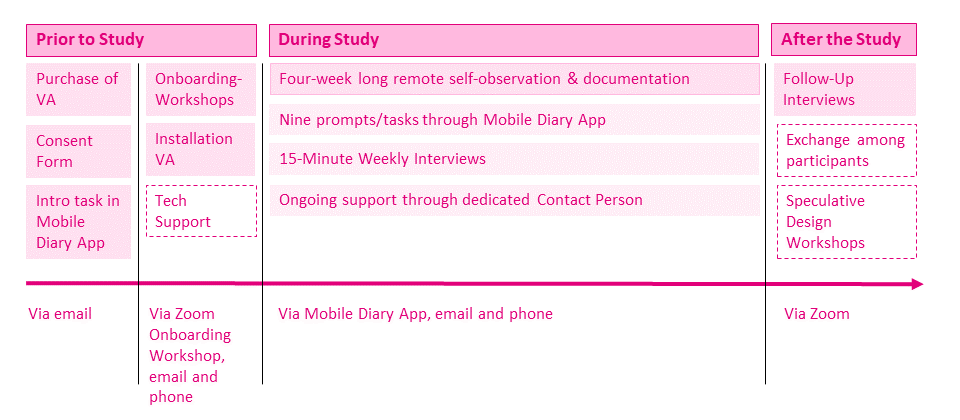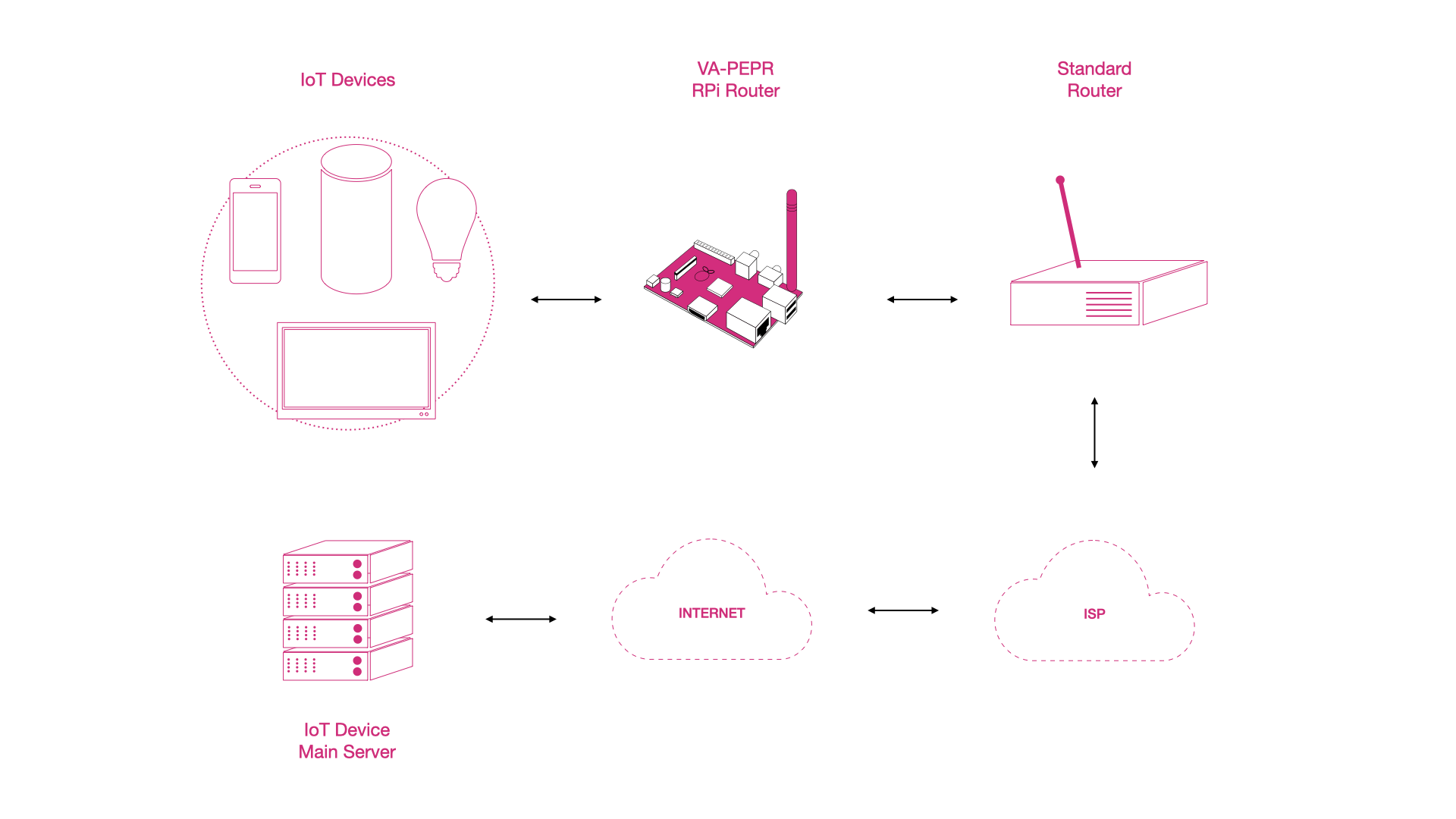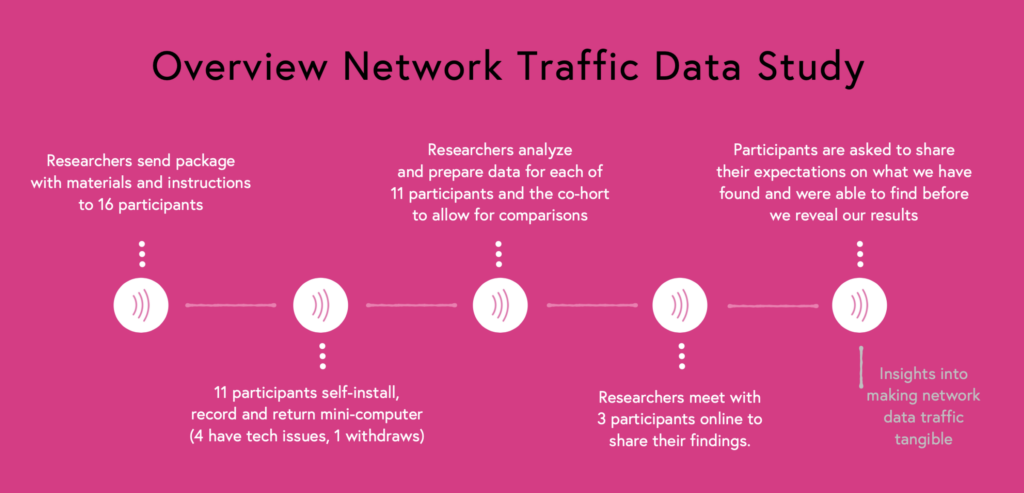Phase 1 - Ethnographic Studies
With the aim of exploring privacy, daily routines, and social interactions to understand how these technologies influence people’s lives we conducted a series of ethnographic studies of people using VAs in their homes in 2021. Due to the COVID19 pandemic, we had to collect the data remotely. Using remote methods and tools, participants documented and shared how they interact with VAs and how the devices affect their home lives.

We’ve got the mobile phones off the dining room, off the table – because now you can just talk to Google. (…) Nobody feels the need to have their mobile phone with them anymore.Participant 10
Diary Study
After participating in the Zoom Onboarding Sessions, 31 participants (households) kept a semi-solicited diary over four weeks using the mobile diary app, Indeemo. They documented and shared their experiences with the VA through photos, videos, audio recordings and notes. They were asked to complete 10 tasks that we provided on a schedule. Additionally, they expanded on their diary entries in weekly Zoom interviews. Follow-up Zoom interviews were conducted 3 and 6 months after the diary study to understand the long-term VA use and its effects on social life at home.
Read more
- Embracing digital offboarding as a design challenge
- Everyday Data and Everyday Publics
- Voice Assistant Use: Challenges for the Home Office Work Context
(Optional) Network Traffic Analysis
With the optional Network Traffic Analysis (NTA) study, we investigated:
- How to design a plug & play, user-friendly and self-installable data traffic monitoring device
- How might a minimally invasive/unobtrusive research approach to reduce the security and privacy risks to participants be conducted
- How can we visualize the data captured for users (i.e., non-experts) and make it understandable to them and
- What insights into privacy and security issues can we gain from a user’s perspective by presenting our findings to them employing semi-structured interviews.

16 households consented to join the NTA study. However, 4 participants experienced technical difficulties and 1 withdrew, allowing us to collect data from 11 households.

- Can we make the invisible data traffic of IoT devices in people’s homes visible and accessible to users?
- How can everyday users participate in future developments, services, and policies?
- How can we conduct user research to achieve this?
Check out our paper to read the results of the NTA study:
What I find is that sometimes the device doesn’t work and then there’s almost a battle at the table to see who can get it to work.
Participant 30
